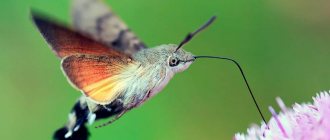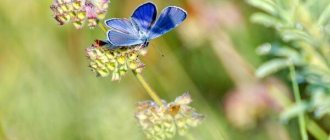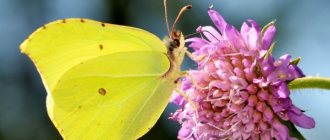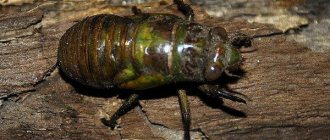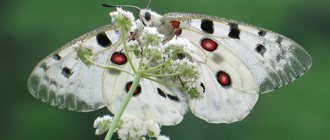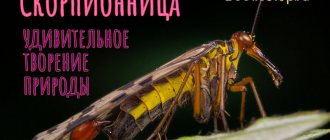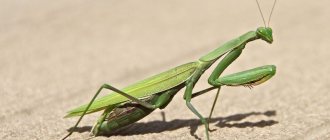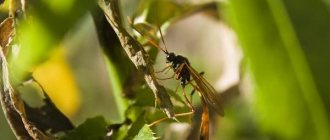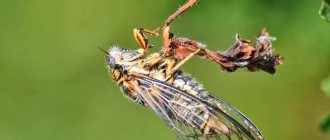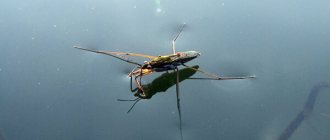Representatives of the swallowtail family are rightfully considered the brightest and largest butterflies. They attract attention with an unusual combination of colors and the original shape of the wings. The swallowtail butterfly can catch the eye of a curious observer anywhere in the world. About 20 species live in Russia, some are listed in the Red Book. One of the interesting features of sailboats is the tails on the hind wings. This detail distracts the birds' attention, saving the butterfly's life.
Features and habitat
Why is the butterfly called that - a large swallowtail? The origin of this interesting name is in the ancient country of Troy, where once upon a time there lived a famous healer named Machaon.
The legend about him says that a huge number of mortally wounded warriors literally returned from the other world thanks to the knowledge and efforts of this miracle doctor. A beautiful butterfly was named in his honor by biologist Carl Lineus.
This attractive creation of nature is characterized by its large size and unusually beautiful color. The wingspan of this butterfly reaches from 65 to 95 mm. The color of the wings is dominated by warm yellow tones.
Against this yellow background, black patterns are clearly visible, more of which are around the swallowtail’s body and on the rims of the wings. The patterns are stripes and specks. The hind wings are decorated with tails, the length of which is about 10 mm.
These same hind wings are decorated with a blue and rounded spot closer to the top of the wing and a rich red eye on its outer side. Summer swallowtails are characterized by a paler color.
In spring it is richer and brighter. The habitat of the butterflies also affects the color. Those that live further south have an intense yellow color and less clearly defined black contours. The inhabitants of the northern territories have a slightly paler yellow color on their wings, but the black patterns on them are clearly visible.
Males are usually smaller in size than females. A clearly visible organ of the swallowtail is its club-shaped antennae, which are characteristic of many butterflies. From every angle the view is beautiful and prosperous. It is impossible to look at a photo of a swallowtail butterfly without admiration .
It conveys all its magical beauty and charm. Looking at this creation of nature, you begin to understand how beautifully this world is structured. Some of its representatives make you believe in fairy tales and miracles. Just the sight of this insect lifts your spirits.
The swallowtail butterfly lives in many areas. You can find it in all European countries except Ireland. This incredible beauty is admired in North America, North Africa and Asia.
The swallowtail inhabits the southern expanses, including the tropical zone. This insect can also be found in Tibet at an altitude of about 4500 m. These butterflies are most comfortable in open areas. Swallowtails love meadows, forest edges, steppes, tundra, and sometimes semi-deserts.
The most prominent subspecies is kamtschadalus (Alpheraky, 1869)
The wide distribution area of swallowtails has led to the formation of various subspecies, differing in color and size.
- P. m. bairdii is a black swallowtail butterfly native to North America. The dark shape is similar to the polyxene swallowtail. The main color is black. On the front wings there is a pattern of yellow strokes and spots located on a black border. On the hind wings, in addition to yellow and blue spots near the tails, there is an orange eye.
- P. m. ussuriensis - lives in Primorye and the Amur region, the group is characterized by large insect sizes. Females have a wingspan of 95 mm, and males have a wingspan of 85 mm. Insects are distinguished by their rich black and blue colors.
- P. m. hippocrates - a subspecies has settled in Japan and nearby islands, in which a blue stripe above a red eye is enclosed between two black ones.
- P. m. kamtschadalus are unique butterflies of bright yellow color with a faded black pattern and shortened tails. The endemic subspecies lives on the Kamchatka Peninsula.
- P. m. gorganus - continental subspecies is widespread on the plains of Russia, in the foothills of the Caucasus and Central Europe. What does the swallowtail butterfly, found in most European countries, look like? The wingspan does not exceed 60-70 mm, their tails are 6-7 mm long. The background of the wings is light yellow with a distinct black pattern and blue spots.
, the tails on the wings of butterflies are shorter and the black coloring along the veins is more developed. In the Amur region and Primorye - the subspecies ussuriensis (Sheljuzhko, 1910) (= race amurensis Verity, 1911), the summer generation of which is characterized by very large sizes - the wingspan of males is up to 84 mm, and for females up to 94 mm.
We invite you to familiarize yourself with: Tsifox - a universal remedy for bedbugs
Lives on Sakhalin and the Kuril Islands
, — a blue stripe above the eyes of the hind wing is located between two black ones. Subspecies amurensis - short tails, one generation per year, light yellow color. In its range, it occupies the entire basin of the middle and lower Amur. The large form of swallowtail called ussuriensis described earlier from the Ussuri region is only a summer generation of the subspecies amurensis.
, compared to the previous subspecies, is smaller, bright yellow with an intense black pattern. The Transbaikal steppes and Central Yakutia are inhabited by at least two subspecies: orientis, which occupies the more southern part of the range, and asiatica, distributed to the north of the latter. Two subspecies of swallowtail described by the Japanese author (Matsumiira, 1928) are mandschurica (Manchuria) and chsshimana Mats. (Shikotan Island) remain insufficiently clarified.
. While maintaining a bright yellow color, it is distinguished by a general paling of the black pattern on the wings and noticeably shortened tails.
Distributed in Central Europe, northwestern Caucasus, southern Russian Plain
, in Great Britain subspecies brutannicus Seitz, in North America
The eastern half of the Greater Caucasus, the steppe and semi-desert regions of the Northern Caspian region, the Caucasian coast of the Caspian Sea, the Kura Valley and the Talysh Mountains are the habitat of centralis; it penetrates into Iran and through the Elburz ridge reaches the Kopet Dag. The subspecies muetiogi Seyer, 1976 was described from Elborz, and weidenhofferi Seyer, 1976 from the southern slopes of the Kopetdag.
In summer, typical individuals of centralis fly in the same places. The latter are often considered only a high-temperature form of swallowtail. A widespread species. It is found throughout Europe (absent only in Ireland, and in England it lives only in Norfolk, everywhere from the seas of the Arctic Ocean to the coast of the Black Sea and the Caucasus).
Found in Asia (including the tropics), North Africa and North America. In the mountains of Europe it rises to an altitude of 2000 m above sea level (Alps), in Asia - up to 4500 m (Tibet) In the north of Europe it develops in one generation, the butterflies of which fly from July to August, in the south two generations develop, in North Africa three , where butterfly years last from April to October.
The lifespan of adults is up to three weeks. They live in well-warmed biotopes, usually with damp areas where food umbrella plants grow. In the north it is found in different types of tundra. In the forest belt, it prefers meadows of various types, forest edges, clearings, roadsides, and river banks.
Often found in agrocenoses. In the Caspian Lowland (Astrakhan region and Kalmykia in Russia, in Azerbaijan) it is also found in unfixed dune deserts and hilly dry steppes. Single individuals with high migration capabilities can fly into large urban centers.
Character and lifestyle
Swallowtail butterflies lead an active lifestyle from late spring to the last month of summer. At this time, they are noticeable on the sides of roads, in a city park, forest edge, and in a field.
Due to human labor activity, which pollutes the environment, there are fewer and fewer swallowtail butterflies in nature. Many varieties of this amazingly beautiful insect are listed in the Red Book.
Black swallowtail
This insect prefers to lead a diurnal lifestyle. The butterfly is so energetic that even after sitting on a flower to taste its nectar, it does not stop working with its wings.
These movements help the insect avoid encounters with enemies, which, unfortunately, they have in abundance in nature. As soon as the insect notices the slightest danger, it immediately takes off.
When the life of a swallowtail caterpillar is threatened, it releases a special poisonous liquid that protects it. In addition, the swallowtail is a favorite insect for butterfly collectors, which also largely leads to their extermination.
These innocent butterflies were exterminated en masse about 80 years ago. For some reason, people decided that swallowtails were harming them and declared war on them. When the person finally realized that there was no harm or danger from this insect, it was already too late, their number decreased significantly.
Swallowtail Maaka
Now connoisseurs of everything beautiful in nature can only hope that the swallowtail butterfly will not completely disappear from the face of the earth, but rather will gradually multiply.
Swallowtail - a beautiful butterfly or a malicious pest?
g class=”lazy lazy-hidden” src=”https://selo.live/wp-content/plugins/a3-lazy-load/assets/images/lazy_placeholder.gif” data-lazy-type=”image” data -src=”https://selo.live/wp-content/uploads/2020/12/pp_image_60854_x9hmpji9itbabochka-1-770×470.jpg” alt=”babochka-1-770×470.jpg”>
Sometimes on dill we see a large green caterpillar with bright black stripes and orange spots. I used to crush them mercilessly. But just recently I learned that this is the caterpillar of the swallowtail butterfly. And it immediately became a pity to kill them.
Swallowtail is listed in the Red Book of many countries
Why is a swallowtail a swallowtail?
We have become accustomed to the idea that the brightest and most unusual animals live somewhere in distant lands. Our swallowtail, which belongs to the family of sailboats, is not inferior to many “tropicans” in its brightness of pattern and refinement of form, but it has become less and less common. About 80 years ago, the caterpillars of these butterflies were considered malicious pests of cultivated plants, so they waged a merciless fight against them. Therefore, the number of swallowtails has sharply decreased and today they are listed in the Red Book, not only in our country, but also in many European countries.
The swallowtail received its name from the famous Swedish systematizer Carl Linnaeus. He named the butterfly in honor of the outstanding surgeon of antiquity who participated in the Greek campaign against Troy. It is borrowed from ancient Greek mythology: Machaon was the name of one of the two sons of the Thessalian king and physician Asclepius (Aesculapius, later the god of healing). This name is found in Ovid, Virgil, ancient authors wrote about the “swallowtail craft”, “swallowtail medicine”.
Butterfly
Of our daytime butterflies, the swallowtail is the largest. Its wingspan sometimes reaches ten centimeters. It feeds on the nectar of flowers. This butterfly is always in flight. Even when she sits on a flower, she continues to flap her wings. The mating games of colorful swallowtails resemble intricate dances in flight.
After courtship, the female lays eggs on a food plant: on a stem or leaf. In total, during the breeding season, one female is capable of laying about 120 eggs. During its short life (only 20 days), the butterfly lays eggs twice.
The caterpillar feeds mainly on flowers and seeds of plants, less often on leaves.
Caterpillar
After 7 days, the swallowtail caterpillar hatches from the egg - very bright and very voracious, it can eat a bed of dill in a day.
The bright colors give it a menacing look. When irritated or threatened, the caterpillar puts out orange “horns” called osmetria, secreting an orange-yellow liquid with a pungent, unpleasant odor. Only young and middle-aged caterpillars protect themselves in this way; adult caterpillars do not move their glands when in danger.
The swallowtail caterpillar clings quite tightly to the stems and does not fall, even if the stem is cut off and taken to another place.
She does not climb trees and does not eat roots. Forage plants include various umbelliferous plants, in particular hogweed, carrots, dill, parsley, fennel, celery, and caraway seeds. Can feast on Amur velvet or alder. Prefers to feed on flowers and ovaries, less often on plant leaves. By the end of its development, the caterpillar hardly eats.
When irritated or threatened, the caterpillar puts out orange “horns.”
Doll
Pupation occurs on the stems of the host plant or on neighboring plants. The color of the pupae depends on the season - summer pupae are green or yellowish, covered with small black dots. Overwintering ones are brown in color, with a black head end and thick horns on the head.
So is it a pest or not?
Now it is difficult to say how significant the damage caused by the swallowtail to cultivated plants is. Plowing land, grazing, mowing, using pesticides - all this is a real environmental disaster for the swallowtail and many other insects. And it is now rare to see this caterpillar in our garden beds. Kill it or give it the opportunity to develop into a beautiful butterfly - it's up to you.
Today, scientists from different countries are trying to artificially breed rare, endangered swallowtails, and then release them into the wild. English experts tried to restore the population of the swallowtail, which disappeared in one of the wetlands of Cambridgeshire due to land drainage in the 1950s. The eggs laid by the butterflies in the laboratory were transferred here, having previously planted about 2 thousand bushes of the bitter bitter plant. The experiment, alas, was unsuccessful.
However, there, in the UK, thanks to the experiments of biologist K. Clark in the laboratory, it was possible to breed a large number of adult butterflies within 1-2 seasons. This gives us hope that our children and grandchildren will still be able to admire the aerial dances of the beautiful swallowtail.
Nutrition
The habitat of these insects must necessarily contain umbrella plants because it is their nectar that is the favorite delicacy of swallowtail butterflies. Lately, not often, but you can still notice them on carrots, dill, fennel, hogweed, caraway, parsley, angelica and other plants.
Swallowtail caterpillars prefer to extract beneficial substances from wormwood, ash, and alder. For adult insects, sometimes it does not matter whether the plant is an umbrella plant or not, as long as it contains enough nectar, which they obtain with the help of a proboscis.
It is very important for caterpillars to be constantly fed, so their feeding process begins from the very first moment of their birth. With the end of the caterpillar's development, its appetite noticeably decreases.
Subspecies
The wide distribution area of swallowtails has led to the formation of various subspecies, differing in color and size.
- P. m. bairdii is a black swallowtail butterfly native to North America. The dark shape is similar to the polyxene swallowtail. The main color is black. On the front wings there is a pattern of yellow strokes and spots located on a black border. On the hind wings, in addition to yellow and blue spots near the tails, there is an orange eye.
- P. m. ussuriensis - lives in Primorye and the Amur region, the group is characterized by large insect sizes. Females have a wingspan of 95 mm, and males have a wingspan of 85 mm. Insects are distinguished by their rich black and blue colors.
- P. m. hippocrates - a subspecies has settled in Japan and nearby islands, in which a blue stripe above a red eye is enclosed between two black ones.
- P. m. kamtschadalus are unique butterflies of bright yellow color with a faded black pattern and shortened tails. The endemic subspecies lives on the Kamchatka Peninsula.
- P. m. gorganus - continental subspecies is widespread on the plains of Russia, in the foothills of the Caucasus and Central Europe. What does the swallowtail butterfly, found in most European countries, look like? The wingspan does not exceed 60-70 mm, their tails are 6-7 mm long. The background of the wings is light yellow with a distinct black pattern and blue spots.
Reproduction and lifespan
The breeding season of swallowtail butterflies is in spring. Usually these are the months of April-May. At this time, you can notice especially active circling of these insects in the air. It's like the dance of some magical fairies. To such an extent this spectacle is attractive and bewitching.
Swallowtail caterpillar
Many people calm their nervous system by looking at aquarium fish or a fire. The flight of butterflies and their intricate movements in the mating dance also make you forget about everything in the world. Their fluttering from flower to flower in pairs makes you think and dream about something airy and sublime.
Usually such dances end with the fertilization of the female, who tries to lay eggs on food plants. It is not difficult for one female to lay about 120 eggs in one mating season. These insects have a very short lifespan, but during this short time they still manage to lay a large number of eggs.
swallowtail caterpillars with a black color and red and white additives begin to emerge from such a clutch It is difficult to find more voracious creatures than newly born caterpillars. They eat the plant they are on with great appetite. As they grow, their color changes somewhat.
As soon as the cold weather begins to approach, the caterpillar turns into the pupa of a swallowtail butterfly. In this state, the swallowtail insect survives the winter cold, and in the spring it delights us with its transformation into a butterfly. Such a long cycle, unfortunately, does not make this insect a long-liver. Swallowtail butterflies live in nature for no more than 20 days.
Keeping at home
Let us dwell in more detail on the description of the procedure for breeding the swallowtail butterfly at home. In order for such a beauty to take root and reproduce in your home, you will need:
- an aquarium or terrarium, at the rate of 10 liters of volume for every 5 caterpillars;
- a small container of water where dill will be placed for feeding the caterpillars;
- branch for caterpillar pupation.
Did you know? To scare away possible enemies, the caterpillar uses osmeteria, a special protective organ located on its head. When the caterpillar is frightened, the osmeteria begins to emit a very unpleasant odor.
The bottom of the aquarium - or rather, now it would be more correct to call it an insectarium - should be lined with a layer of thick paper, its function is to absorb excess moisture. Humidity, in general, is one of the key points in the maintenance and breeding of caterpillars, and subsequently swallowtail butterflies. You can find a lot of conflicting information about how you should regulate humidity, or whether you should do it at all. In our case, the normal level is maintained by an open container of water containing dill.
You should also put several branches in the insectarium, preferably with shoots sticking out in different directions. The branch should lie on the surface, and the shoots should rise above the surface, in different directions. Such branches will be needed for caterpillar pupation.
Nutrition
What to feed the caterpillars was stated above; Now a few words about what swallowtail butterflies eat. In nature, insects feed on nectar. Give him a semblance of such nutrition - cut an apple or any other fruit, preferably one that is slightly beginning to rot, and leave it.
The method described above is not very effective, so it’s worth trying another option. Dissolve 2 teaspoons of honey in a glass of clean, settled water. Pour the resulting artificial nectar into a bowl or saucer. Carefully bring your pet and place it on the side of the bowl or on the edge of the saucer. Using a thin needle, pick up its proboscis and dip it in the nectar.
Lifespan
A butterfly lives on average three to four weeks.
Important! If you seriously decide to start breeding these beautiful creatures, you should know that some species of butterflies do not feed at all during their adult period. During this period of life, the insect uses the energy accumulated during its stay as a caterpillar. So if you come across, for example, a peacock eye, and it doesn’t touch the food, don’t worry, everything is fine
So if you come across, for example, a peacock eye, and it doesn’t touch the food, don’t worry, everything is fine.
Reproduction
Mid-August is the most favorable time for collecting caterpillars. It is better to take those whose size does not exceed two centimeters.
The caught caterpillar should be planted on dill. After 15-20 days, she will have eaten enough and will be ready to pupate. As the caterpillar grows, it will change color. There is no need to worry about this; these are normal consequences of shedding.
After 15-20 days, the caterpillar stops feeding and begins to look for a branch for pupation. When the caterpillar finds the desired branch, it attaches vertically to it on both sides. She will remain in this position for up to two days; Molting and pupation most often occur at night. The pupa emerges from a collapsed shell. Now you need to put the pupa with the branch in the refrigerator until the beginning of spring.
Now you know how swallowtails live in the wild and how to breed them at home. All of the above manipulations, at first glance, seem quite simple. But, if you decide to choose butterfly breeding as a hobby, and it doesn’t matter to you which one to start with, try breeding hawkmoth as a start. This is no less beautiful insect, and absolutely not demanding, which cannot be said about the swallowtail.
Doll
Pupation occurs on the stems of the host plant or on neighboring plants. The color of the pupa depends on the color of the substrate - summer pupae are green or yellowish, covered with small black dots. Overwintering pupae are brown in color, with a black head end and thick horns on the head. In Central Europe, the summer pupal stage lasts 2-3 weeks, for wintering pupae - several months, Listed in the Red Books of Ukraine (1994), in Russia - in the Red Book of the Moscow Region (1998) - category 3, Smolensk Region - category 2, Vologda region (2006) - 3rd category, Latvia (1998) - 2nd category;
Enemies of butterflies
The main enemies of swallowtails are birds, spiders and other insectivores. But butterflies are also very vulnerable in the stages of transition to adulthood: in the form of eggs, caterpillars and pupae. Many die due to steppe fires.
The number of these butterflies varies in different regions. This is greatly influenced by their capture for collections. In Ukraine, Germany, Lithuania and Latvia, these butterflies are listed in the Red Book. The swallowtail butterfly is not a numerous species and does not cause harm to agriculture. But this became known not so long ago, and previously they waged a merciless fight against it. If scientists fail to restore the population of these beautiful creatures, they may disappear from the face of the Earth.
Order Lepidoptera - Lepidoptera Family Papilionidae - Swallowtails Papilio machaon L. - Swallowtail
Swallowtail is a rare, declining species and is listed in the Red Book. The decline in the number of this beautiful butterfly is associated, first of all, with the change or complete destruction of its habitats through the use of pesticides and other toxic substances, as well as due to trapping.
The swallowtail was first described by the Swedish scientist K. Liney in 1758. He named his discovery in honor of the son of the famous ancient Greek physician Asclepius, Machaon, who was known as a warrior and healer of the heroes of the Trojan War.
Swallowtail is a large butterfly, with a wingspan reaching 9 cm. The general color of the wings is bright yellow, the outer border is black with yellow edge holes. On the outer edge of the hind wings, blue spots are visible against a black background; at the rear corner there is a red spot with a blue tint; the hind wings have elongated tails. This species of butterfly is found from May to August in forest edges, clearings, meadows and vegetable gardens. Females lay round, smooth, yellowish eggs in the umbels of dill, parsley, carrots, cumin and other umbelliferous plants, on which caterpillars appear after 7 days. At first, the body of the caterpillars is completely black, but as they grow and molt, it gradually changes color and becomes bluish-green with black belts on which there are small orange spots. To scare away enemies of the caterpillars, two long sac-like glands located behind the head are used. When danger arises, these glands turn outward and emit an unpleasant odor. The swallowtail overwinters in the pupal stage. The female gives two generations per year. The emergence of butterflies occurs in May-June, the second generation - in August. Swallowtail butterflies feed on nectar of flowers, caterpillars feed on plants of Umbelliferae, Lamiaceae and some other plant families.
In total, there are 550 species of this beautiful family in the world fauna, and almost all of them are concentrated in warm regions of the globe. In the south of India, the island of Ceylon, in Africa there is a real kingdom of sailboats. There is their homeland, and only there, under the beneficial rays of the hot tropical sun, do they achieve their full beauty. In the virgin forests of tropical Africa, under the crowns of trees, like a swallow, the sailboat Antimachus flies, its wings spanning 23 cm. In recent years, the number of swallowtails has been rapidly decreasing. Their disappearance is explained by the fact that wild thickets of umbrella plants, whose leaves feed the caterpillars, are being destroyed. Some of the blame also falls on collectors who, in an effort to get the most beautiful butterflies into their collections, carefully catch them both for themselves and for exchange with butterfly lovers in other countries.
Thus, Machaon Papilio, about which some 10-15 years ago it was written that this is one of the most common butterflies in Europe, has now become an endangered species. Its range occupied the temperate zone of Asia, northern Africa, and North America. Vertically, it rose in the Alps up to 2000 m above sea level, and in Tibet - up to 4500 m. The ability to adapt to a variety of living conditions indicates the broad ecological plasticity of the species. But, even having a perfect survival mechanism, the swallowtail cannot withstand the onslaught of anthropogenic environmental factors, which often create extreme conditions.
Through the pages of the Red Book of Papilionidae
).
Trogonoptera trojan
This species of butterfly surprises with its beauty. At the same time, the size is also admirable. Females and males grow to approximately the same size. On the black wings, which have a velvety texture, you can see bright green triangles. This appearance contributes to the appreciation of Trogonoptera Trojan by many collectors.
It is important to note that butterflies of this species live only on the island of Palawan. However, they may completely disappear in the near future. Rich collectors also breed butterflies on special farms.
Golden Birdwing - Talisman for prosperity
The Asian miracle butterfly is very popular in its country, as it is considered a talisman that brings material well-being. The butterfly got its interesting name due to the large size and color of its wings.
The color itself consists of two colors: the upper wings of the butterfly are black, and the lower wings are golden or, more accurately, yellow. The unsurpassed combination of colors makes this butterfly one of the most beautiful on our planet.
5
Notes
- Striganova B. R., Zakharov A. A.
Five-language dictionary of animal names: Insects (Latin-Russian-English-German-French) / Ed. Doctor of Biology sciences, prof. B. R. Striganova. - M.: RUSSO, 2000. - P. 265. - 1060 copies. — ISBN 5-88721-162-8. - Korshunov Yu. P.
Keys to the flora and fauna of Russia // Mace Lepidoptera of Northern Asia. Issue 4. - M.: Partnership of Scientific Publications KMK, 2002. - P. 28. - ISBN 5-87317-115-7. - ↑ 12
Kaabak L.V. Butterflies of the world. - M.: Avanta+, 2007. - 184 p. (The most beautiful and famous) - Condamine FL, Toussaint EFA, Cotton AM, Genson GS, Sperling FAH, Kergoat GJ 2013. Fine-scale biogeographical and temporal diversification processes of peacock swallowtails ( Papilio
subgenus
Achillides
) in the Indo-Australian Archipelago // Cladistics. Vol. 29. P. 88-111. - Tuzov VK, Bogdanov PV, Devyatkin AL, Kabak LV, Korolev VA, Murzin VS, Samodurov GD, Tarasov EA Guide to the butterflies of Russia and adjacent territories (Lepidoptera, Rhopalocera). Vol. I. (Hesperiidae, Papilionidae, Pieridae, Satyridae). Sofia, 1997. 480 p.
- Dubatolov V.V., Kosterin O.E. 1999. Daytime lepidoptera (Lepidoptera, Hesperioidea, Papilionoidea) of the international reserve “Dauria” // Insects of Dauria and adjacent territories. Vol. 2. Proceedings of the State Biosphere Reserve "Daursky". - Novosibirsk. — P. 138—194.
- Dubatolov V.V., Streltsov A.N., Sinev S.Yu., Anikin V.V., Barbarich A.A., Barma A.Yu., Baryshnikova S.V., Belyaev E.A., Vasilenko S. .V., Kovtunovich V.N., Lantukhova I.A., Lvovsky A.L., Ponomarenko M.G., Sviridov A.V., Ustyuzhanin P.Ya. 2014 [2015]. Lepidoptera of the Zeya Nature Reserve / ed. V.V. Dubatolova. Blagoveshchensk: BSPU Publishing House. 304 pp.
- Dubatolov V.V., Mutin V.A., Novomodny E.V., Dolgikh A.M. 2010. Distribution limits of diurnal lepidoptera (Insecta, Lepidoptera: Hesperioidea, Papilionoidea) of the subboreal and southern representatives of the temperamental complex in the Lower Amur region // Amur zoological journal. T. 2. No. 3. P. 253-275.
Swallowtail butterfly: interesting facts
In 2006, at the initiative of the German Union for Nature Conservation, the swallowtail became a symbol of the country.
In this way, people's attention is drawn to the plight of endangered species. The tails and eyes on the tips of the wings serve to distract the birds' attention from the vital organs of the insect. If a butterfly is disturbed, it begins to flap its wings sharply, trying to scare away the enemy with the flashing of bright colors. The moth can be found in the mountains of Tibet at an altitude of up to 4500 km. At the end of summer, the bright colors on the scales fade, and the pattern on the wings becomes faded and unclear. The intensity of the color of the wings depends on climatic conditions. In subspecies living in the northern regions, the main color is sandy, almost white
Insects in the south change their palette to a bright yellow hue.
Glory of Bhutan - Unusual Moth
©
The unusual and peculiar shape of this species of butterfly attracts the attention of even those who are not particularly fond of insects of this species. And the wingspan and ability to camouflage by folding wings one on top of the other is surprising and amazing. The Indian beauty butterfly lives in mountains and forests, and is carefully protected by the state. Each wing has three tails of different lengths, which give the whole image sophistication and grace, and bright red spots loom like signal identifiers: “You can’t eat me, I’m inedible.”
8
Madagascar comet
The Madagascar comet, also called the African moon moth, is recognized as one of the largest and most attractive butterflies in the world. The size of females is often much larger than that of males.
Madagascar comets, unfortunately, only live for a few days. At the same time, butterflies of this species cannot feed, since they do not have a system responsible for the nutritional function. Life activity is supported by useful components that were accumulated during the development of the caterpillar. However, the nutrients only last for a short period of time.
Madagascar comets live in the tropics and are active only at night, so it is almost impossible to see them in reality.
Description of the swallowtail
Papilio machaon represents the family of swallowtails (cavaliers), part of the order Lepidoptera (lepidoptera). The first description of the butterfly, as well as its Latin name, belongs to Carl Linnaeus.
Appearance
Swallowtail wings are not necessarily yellow: sometimes they are painted white, lined with characteristic black veins, and framed by a black border with light semicircles. This pattern is observed on the front wings, the rear ones always look brighter and more intricate.
Along the hind wings of the swallowtail there is a wide blue (pale blue) wave, limited by black “borders” above and below. The part of the wing adjacent to the body of the butterfly has a recognizable red/orange “eye” with a black outline. In addition, the hind wings are equipped with flirty (up to 1 cm long) tails.
The body of the swallowtail, overgrown with light hairs, is cut through by several indistinct black lines on the abdomen and chest, while the back appears very dark due to a thick black stripe running from the head to the very bottom. The oral apparatus looks like a black proboscis, curled into a spiral when unnecessary and straightened to suck out flower nectar. On the forehead there are long, segmented antennae with noticeable knobs at the tips.
The variability of pattern/color depends both on the date of appearance of the butterflies and on the region of their habitat. The further north it is, the paler the swallowtail. Less bright specimens are also observed among butterflies of the first generation, while the second generation is not only brighter, but also larger. True, in the first generation the black patterns on the wings are more distinct. If the summer is very hot, the pupae usually produce smaller swallowtails with a sophisticated black ornament.
Papilio machaon is very similar to Papilio hospiton (Corsican swallowtail), but differs from it in larger red/blue spots, less overall darkening of the wings and longer tails.
Swallowtail dimensions
This is a large diurnal butterfly with a wingspan of 64 to 95 mm. The size of the swallowtail is determined by its gender, generation (1, 2 or 3), as well as its habitat.
Lifestyle
Swallowtail, like other swallowtails, is active on warm sunny days. In such weather, he has access to his favorite flowers and inflorescences, which feed him with nectar filled with valuable microelements. Swallowtails need a lot of nectar, so they are often found in parks, meadows and gardens.
Males are territorial, with the center of the chosen territory located at the dominant height. Male swallowtails often gather in groups (10–15 individuals), sitting on dung or on the banks of nearby bodies of water. Males and females also sit on hills, tall trees, or flutter in the air, demonstrating a typical up-and-down dance.
Interesting. In nature, it is extremely difficult to capture a sitting butterfly with its wings fully open, since the hind wings are usually half hidden under the front ones.
This happens when the sun’s rays fall on a chilled swallowtail (at sunrise or after rain), and it spreads its wings as much as possible in order to quickly warm up and fly away. The swallowtail spreads its wonderful wings for a few minutes, and taking a photo at this moment is considered a great success for the photographer.
Lifespan
The flight of swallowtails (taking into account climatic conditions) occurs in spring and autumn, when one, two and even three generations of butterflies are born. Most swallowtails on the globe give 2 generations, in the north of the range - only one, but in North Africa - as many as three. The flight of butterflies in temperate climates lasts from May to August, on the African continent - from March to November. The lifespan of a swallowtail (regardless of its habitat) is about 3 weeks.
Subspecies
Due to its very wide range, the swallowtail forms up to 37 subspecies.
In Eastern Europe it is represented by a nominative subspecies. orientis lives in southern Siberia
(Verity, 1911), the tails on the wings of butterflies are shorter and the black coloring along the veins is more developed.
In the Amur region and Primorye - the subspecies ussuriensis
(Sheljuzhko, 1910) (= race amurensis Verity, 1911), the summer generation of which is characterized by very large sizes - the wingspan of males is up to 84 mm, and for females up to 94 mm.
The subspecies lives on Sakhalin, the Kuril Islands and Japan hippocrates
(C. et R. Felder, 1864), - a blue stripe above the ocelli of the hind wing is located between two black ones.
Subspecies amurensis
- short tails, one generation per year, light yellow color.
In its range, it occupies the entire basin of the middle and lower Amur. The large form of swallowtail called ussuriensis
is only a summer generation of the subspecies
amurensis
.
Underside of wings
Subspecies sachalinensis
, compared to the previous subspecies, it is smaller, bright yellow with an intense black pattern.
The Transbaikal steppes and Central Yakutia are inhabited by at least two subspecies: orientis
, which occupies the more southern part of the range, and
asiatica
, distributed to the north of the latter.
Two subspecies of swallowtail described by the Japanese author (Matsumura, 1928) are mandschurica
(Manchuria) and
chishimana
Mats. (Shikotan Island) remain insufficiently clarified.
The most outstanding subspecies for its coloring is kamtschadalus
(Alpheraky, 1869). While maintaining a bright yellow color, it is distinguished by a general paling of the black pattern on the wings and noticeably shortened tails.
In Central Europe, the northwestern Caucasus, and the south of the Russian Plain, the subspecies gorganus
(Fruhstorfer), in Great Britain subspecies
britannicus
Seitz, in North America subspecies
aliaska
Scudder.
The eastern half of the Greater Caucasus, the steppe and semi-desert regions of the Northern Caspian region, the Caucasian coast of the Caspian Sea, the Kura Valley and the Talysh Mountains are the habitat of centralis
, it penetrates into Iran and through the Elburz ridge reaches the Kopetdag.
muetingi
was described from Elborz
weidenhofferi
from the southern slopes of the Kopetdag .
Asia Minor subspecies syriacus
(type locality: Syria).
rustaveli
is an inhabitant of mid- and high-mountain landscapes throughout the Caucasus .
However, most taxonomists do not recognize many "subspecies" of the swallowtail; so, Kopetdag weidenhofferi
Seyer, 1976 represents only a small spring form, very similar to the nominate individuals;
of centralis
fly in the same places . The latter are often considered only a high-temperature form of swallowtail.
What are they?
Unlike worms, with which they are constantly compared, caterpillars are not an independent group of animals. These are insect larvae - one of the forms of development of lepidoptera, or butterflies. This stage occurs after the “egg” stage and can last from a couple of weeks to several years. Then it becomes a pupa and only then an adult.
The body of all types of caterpillars consists of a head, 3 thoracic and 10 abdominal segments. The eyes are located on the sides of the head. They have many limbs. In the area of the thoracic segments there are three pairs of legs, on the belly there are about five.
Caterpillars are rarely completely naked. Their body is covered with single or very dense hairs arranged in bunches. Many species of caterpillars have raised cuticle outgrowths that form denticles, granules and spines.
From the moment the caterpillar hatches from the egg, it begins to change. Often individuals of larvae of the same species, but of different ages, differ in appearance. As they grow, they molt from two (miner caterpillar) to forty (clothes moth) times.
Butterfly larvae have a special saliva. When exposed to air, it hardens to form silk. People have not ignored this ability and have been breeding caterpillars for centuries to obtain valuable fibers. Predatory species are also used to control pests in gardens, but herbivores can cause damage to the farm.
Sailboat antimah
These large butterflies live in Africa. Females always grow smaller than males. However, beauty always surprises people. Lepidoptera have a unique wing color.
The sailboat Antimach was found in the middle of the 18th century thanks to the biologist Smithman from Great Britain. Moreover, the species of these butterflies was named after the hero Antimachus, who appeared in many myths. The butterfly population is considered small, so it needs special protection.
Greta Oto - Glass Beauty
Of amazing beauty, the most graceful and sophisticated butterfly in the world is the butterfly with the female name Greta Oto. Her amazing wings are so thin and transparent that it seems as if they are made of the finest crystal.
You can meet such a little beauty in Mexico and Argentina, and it lives in humid, evergreen and flowering forests. This butterfly is a gourmet and feeds on the nectars of various poisonous flowers. And she does this in order to scare away her enemies with the possibility of poisoning. Clever, isn't it?
But about the most poisonous scorpions in the world, read an interesting article on our website.
6
Related species
The Maak's swallowtail or blue swallowtail butterfly also belongs to the genus Papilio. The insect is named after R. K. Maak, a researcher of Siberia and the Far East. The wingspan of the largest butterfly in Russia is 125-135 mm. The color of the forewings of males has a green tint and black stripes. The hind wings are dark blue with blue spots. Females are brown or black in color; the hind wings have a pattern of red spots at the outer edge.
The Maaka tail-bearer lives in Primorye, Transbaikalia, Sakhalin, Korea, Japan and China. The insect lives in deciduous and mixed forests. Caterpillars feed on trees from the rue family - Amur velvet, Sakhalin velvet. The blue swallowtail is listed in the Red Book of the Sakhalin Region.
Distribution area
- These representatives of the species are distributed in various parts of the planet and Europe in particular. They are not found except in Ireland. They live in Asian countries, throughout the USA and North America. Individuals are found in African countries.
- It is interesting that the range extends equally widely both in tropical zones and in mountainous areas. Some representatives live at an altitude of up to 4.5 km. above sea level, so we can say that they are quite hardy.
- Individuals love open territorial areas. They preferably settle in meadow areas or forest edges, in tundras, steppe regions, semi-deserts, etc. Northern species live from early to late summer, while southern species are visible from early spring to autumn. The lifespan of an adult is 20 days.
The species lives throughout the Palearctic. Found in all European countries, excluding Ireland. Butterflies settled in the temperate zone of Asia, northern Africa, and North America. The habitat boundary runs from the coast of the Arctic Ocean to the Black Sea and the Caucasus Mountains.
